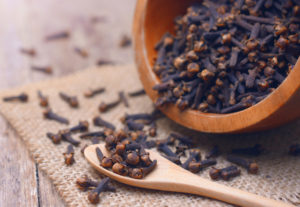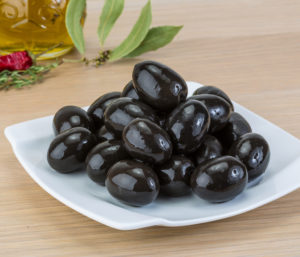Antioxidant Foods: Here’s How to Fight Off Those “Free Radicals”
You've likely heard that antioxidant foods are good for your health. But exactly what are antioxidants, and which foods contain them?
Many of us are looking for ways to live a healthier life and reduce our risk of chronic illness. Can antioxidant foods help? First, it helps to know exactly what is meant by the often misunderstood term antioxidants—and, of course, it helps to know where we get antioxidants.
In short, antioxidants are a group of chemicals that reduce cell damage and the risk of chronic disease. Fruits and vegetables are naturally rich in antioxidants—just one of many reasons why we should be eating more of these plant-based foods. But did you know some grains, cereals, and beverages also contain antioxidants?
So how do antioxidants improve our health? Consider that your cells are constantly producing a variety of harmful chemicals called free radicals. In addition, your body is also exposed to free radicals in the environment—cigarette smoke, air pollution, and sunlight, for example. These free radicals trigger a process called “oxidative stress,” which damages cells. Oxidative stress is implicated in the aging process and also in many chronic diseases, from cancer to cardiovascular diseases, and from diabetes to dementia.
Research shows that high antioxidant foods counteract the effects of oxidative stress. In fact, there are hundreds of different substances that act as antioxidants. The most recognizable among them are beta-carotene (a precursor to vitamin A), vitamin C, vitamin E, selenium and manganese, glutathione, melatonin, coenzyme Q10, lipoic acid, flavonoids, and phytoestrogens.
The action of these antioxidant substances is complex and poorly understood. Each substance has a specific action, but it is in combination that antioxidants appear most powerful. Attempts to mimic their effects with supplements have been largely unsuccessful; it seems nature remains smarter than mankind when it comes to antioxidants. Part of the reason for this seems to be bioavailability: Your body “knows” how to use natural antioxidants; it does not know how to use the lab-made versions.
High-Antioxidant Foods
Now that we’ve explored what antioxidants are, let’s take a look at which foods give you the most antioxidant bang for your buck. Research published in Nutrition Journal analyzed the antioxidant content of more than 3,100 foods and drinks. Here we summarize some of the top performers.
Top 15 Antioxidant-Rich Fruits and Vegetables
The first high antioxidant foods that probably come to mind is probably fruits and vegetables, and for good reason! They rich in antioxidants and other healthy food components, such as slow release carbohydrates, protein and fiber. Here are the top 15 antioxidant fruits and vegetables commonly available in the U.S. Figures reflect antioxidant content in millimoles (mmol) per 100 g.
- Apples, dried: 3.8
- Artichoke: 3.5
- Plums, dried: 3.2
- Apricots, dried: 3.1
- Curly kale: 2.8
- Chili, red and green: 2.4
- Prunes: 2.4
- Strawberries: 2.1
- Pomegranate: 1.8
- Black olives: 1.7
- Dates, dried: 1.7
- Mango, dried: 1.7
- Oranges: 0.9
- Papaya: 0.6
- Broccoli, cooked: 0.5
Note: All values are averages. There may be a considerable range of values depending on where food has been grown, how old it is, and other factors.
Top 10 Antioxidant-Rich Cereals, Grains, Legumes, Nuts, and Seeds
These food staples make up a large part of many diets and are a great way to boost your antioxidant levels. Figures reflect antioxidant content in mmol/100 g.
- Barley, pearl and flour: 21.9
- Beans: 8.5
- Bread, with fiber/whole meal: 6.4
- Buckwheat, white flour: 4.7
- Chestnuts, with pellicle: 2
- Crisp bread, brown: 1.7
- Maize, white flour: 1.4
- Millet: 1.3
- Peanuts, roasted: 1.1
- Pistachios: 1
Top 10 Antioxidant-Rich Herbs and Spices
Eating flavorful foods can help you stick to a healthy diet. Herbs and spices are ideal for getting a tasty antioxidant kick. While the levels are high, you probably don’t consume huge quantities on a daily basis.
Indian food is often touted for its antioxidant properties; the use of combinations of antioxidant spices with vegetables and healthy proteins makes for a healthy, tasty meal. Figures reflect antioxidant content in mmol/100 g.

Dried cloves, ideal for spicing up any number of dishes, ranks as one of the top sources of antioxidants.
- Clove, dried, whole and ground: 277.3
- Mint leaves, dried: 116.4
- Allspice, dried ground: 100.4
- Cinnamon, dried ground: 77
- Oregano, dried ground: 63.2
- Thyme, dried ground: 56.3
- Rosemary, dried ground: 44.8
- Saffron, dried ground: 44.5
- Sage, dried ground: 44.3
- Bay leaves, dried: 27.8
Top 10 Antioxidant-Rich Drinks
You can also boost your antioxidant levels with healthy drinks. Many health experts warn against drinking too much fruit juice, however, as it can spike your blood pressure and lacks the healthy fiber of the whole fruit. Figures reflect antioxidant content in mmol/100 g.
- Espresso, prepared: 14.2
- Coffee, prepared filter and boiled: 2.5
- Red wine: 2.5
- Pomegranate juice: 2.1
- Green tea, prepared: 1.5
- Grape juice: 1.2
- Black tea, prepared: 1
- Prune juice: 1
- Cranberry juice: 0.92
- Orange Juice: 0.64
The Antioxidant Power of Chocolate
If you’re a chocoholic, you’ll be delighted to hear that chocolate is rich in antioxidants that come from cocoa. Here’s a look at the antioxidant content of chocolate in mmol/100 g.
- 24–30 percent cocoa chocolate: 1.8
- 40–65 percent cocoa chocolate: 7.2
- 70–99 percent cocoa chocolate: 10.9
Better still, nibble on some cocoa nibs or add a teaspoon of raw cocoa powder to a smoothie.
Increasing Intake of High Antioxidant Foods
If you want to increase your intake of high antioxidant foods changing your diet is the way to go. Begin by cutting down on processed foods—which are often devoid of antioxidants and promote free radical formation—and replacing them with fresh vegetables, fruits, and minimally processed grains. If you love bread, switch to whole grain; if you have a sweet tooth, grab a few pieces of dried apples or apricots, or a couple of squares of dark chocolate. And, of course, season your cooking with herbs or spices.
Keep in mind that antioxidants are just part of the healthy eating puzzle. To optimize your health, you need to have a balanced diet with vegetables, fruits, healthy proteins, and healthy fats. Eat a variety of healthy foods of differing colors. Remember these foods are working in magical ways that science cannot fully fathom.
SOURCES & RESOURCES
For related reading, see these University Health News posts:
A Note on Antioxidant Supplements
Efforts to mimic nature’s antioxidants have largely failed. In fact, some antioxidant supplements, such as vitamin E and beta-carotene, are even harmful to health in large doses. The National Center for Complementary and Integrative Health (NCCIH) recommends, “Do not use antioxidant supplements to replace a healthy diet or conventional medical care, or as a reason to postpone seeing a healthcare provider about a medical problem. If you are considering a dietary supplement, first get information on it from reliable sources.” Dietary supplements contain active ingredients, so always check for interactions with your medications.
Sources & Resources
- To view a full list of total antioxidant content in more than 3,100 foods, beverages, spices, herbs, and supplements, visit Nutrition Journal.
- Check out The National Center for Complementary and Integrative Health (NCCIH) article on antioxidants.



 Ask the EN Experts March 2025
Ask the EN Experts March 2025  Vegan Diet Better Than Omnivore Diet for Cardiovascular Health
Vegan Diet Better Than Omnivore Diet for Cardiovascular Health 
Want antioxidant foods? Here's a selection of fresh fruit that offers antioxidant helps: oranges, mangos, blueberries, strawberries, kiwi, peaches, apples, and red grapes.
Dave Bredeson | Dreamstime